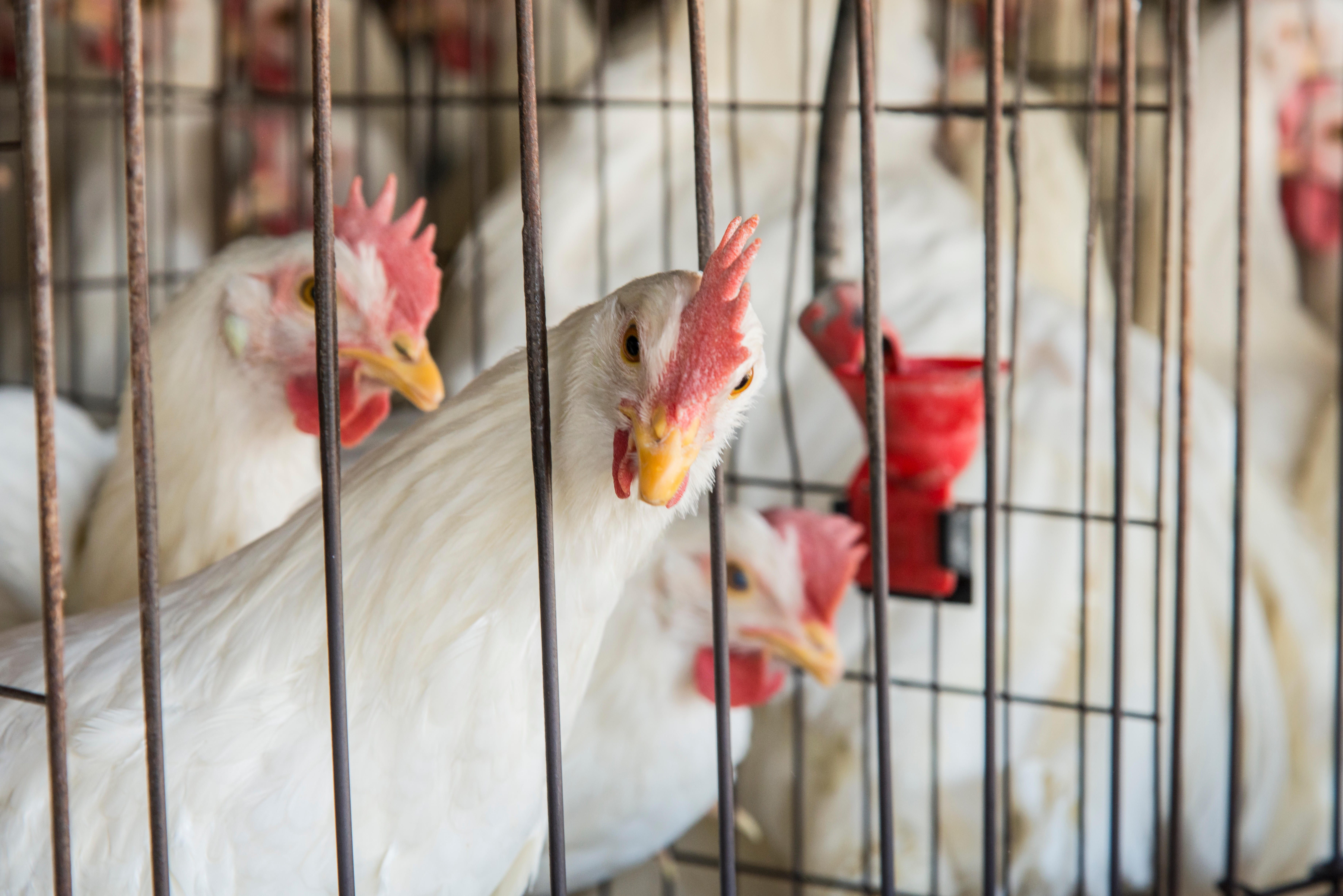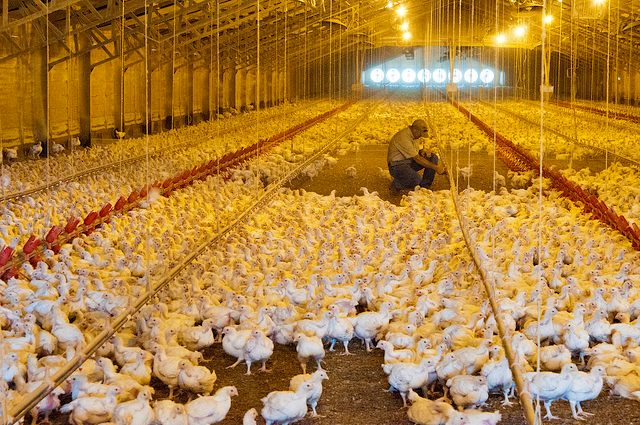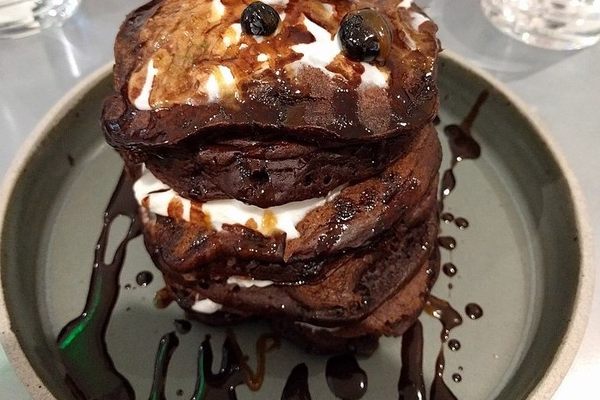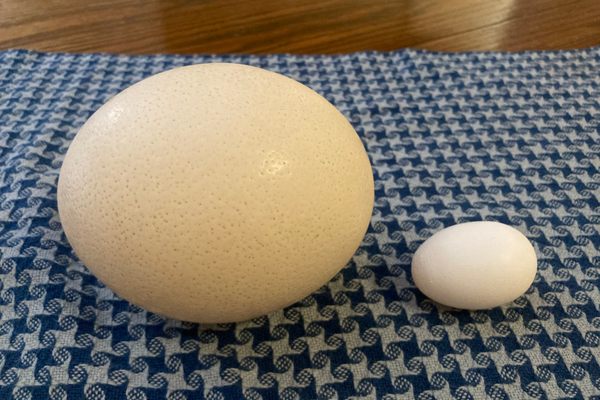Humanity as We Know It Will Be Defined by the Broiler Chicken
The legacy we’re leaving behind looks like a post-apocalyptic KFC.

Imagine, millions of years from now—long after humans have been wiped out by a wayward meteor or giant robot insurrection—a team of alien archaeologists sifting through our rubble in an attempt to piece together our mysterious history. Leafing through stray plastic bags and errant packing peanuts, they happen upon a surplus of something strange. Scattered around the excavation site are giant, porous, chicken bones. Once gnawed upon and discarded, these fossilized remnants of someone’s 10-piece bucket of chicken will be a significant part of our geological legacy. According to a recent study, the broiler chicken, now the most populous bird on the planet, will someday be a defining feature of the Anthropocene, a greasy marker of our epoch.
To put it plainly, we grow, slaughter, and consume an outrageous number of chickens each day. According to Dr. Carys Bennett, honorary fellow at Leicester University and principal investigator of the recent broiler chicken study, there are currently three cluckers for every human on the planet. “It’s the most common terrestrial vertebrate on the planet,” says Dr. Bennett. “Estimates for the number killed per year is thought to be around 65.8 billion—and that’s probably an underestimate.”
Not only are they numerous, they’re enormously different from their recent ancestors. Also, they’re enormous. With an average life expectancy of six weeks, modern chickens have been bred to live fat and die young. Their fragile skeletal structure, porous bones, and extremely massive bodies render them totally incapable of surviving without human-created technology on modern farms. If a flock were plopped in the middle of the woods Survivor-style, they’d be royally clucked.

“I think it would just astonish people,” says Dr. Bennett of future paleontologists who might stumble upon an abundance of broiler chicken bones. “How did this animal evolve when it really can’t support its own body weight and grow to an adult size? And why’s it got such a strange, porous bone?”
In other words, we’ve created an evolutionarily hopeless monster. But we can’t stop eating it. So we’ve kept it alive across the globe—to the extent that broiler chickens have a biomass greater than all other wild bird species combined.
Understanding why and how the broiler bird became so metaphorically and literally big requires jumping back a few decades. Though first domesticated thousands of years ago in Southeast Asia, it wasn’t until the mid-20th century that the modern supermarket chicken began to take wing. “Other animals have been modified by humans, but with the chicken, it happened so rapidly,” says Dr. Bennett. The changes have been so dramatic, rapid, and widespread that the broilers of today are vastly different from those of just half a century ago.
Throughout the first half of the century, there were all sorts of chickens to choose from—from the muppet-like Mottled Houdan to the fluffy-footed Light Brahma. But everything changed when Howard C. Pierce, the poultry research director for the A&P, declared the need for a better bird with a breast like that of a turkey. The Chicken of Tomorrow Contest, an initiative led by the USDA, called for a chicken “chunky enough for the whole family … with breast meat so thick you can carve it into steaks, with drumsticks that contain a minimum of bone buried in layers of juicy dark meat, all costing less instead of more.”

And thus, a juicy chicken was born. Charles Vantress, who had created a red-feathered hybrid by crossing a California cornish with an east coast New Hampshire, was declared the winner and celebrated in style. Chicken enthusiasts paraded through the streets, and a beaming festival broiler queen waved glamorously from the top of a car.
From then on, chickens were subjected to decades of breeding that optimized being bigger and better for human consumption, until their body mass had increased nearly fivefold. Now, says the research team, the broiler chicken’s skeleton, bone chemistry, and genetics are vastly different from what they were 50 years ago. In particular, Dr. Bennett notes, the tibia, or lower leg bone, of the modern-day broiler is twice as long and twice as wide as that of its ancestor. “And the actual bone density is different as well—they’re really quite porous and low in density because they’ve had to grow so fast,” she says. “These bones are just ginormous.”

Dr. Jan Zalasiewicz, a paleontologist and geologist on the project who’s been studying the Anthropocene for decades, says it’s these rapid, widespread skeletal and morphological changes that make the broiler chicken, a new, distinct marker of this epoch. “For awhile, we didn’t really have any new, real morphospecies—a distinctly different skeleton you can recognize from its bones,” says Dr. Zalasiewicz. But the broiler chicken is changing that.
Though it may sound sad that one day we’ll be partly defined by our insatiable appetite for chicken, it’s a testament to humans’ ability to harness technology in agriculture, and a striking reminder of how what seems trivial up close might be astronomical at a large scale. “Chicken sandwiches are part of many people’s everyday life, but they’re actually linked to the history of the Earth” says Dr. Zalasiewicz. “If you translate these everyday things into geology and see the scale of it, the modern world becomes a little bit of a Sci-Fi world.”
Gastro Obscura covers the world’s most wondrous food and drink.
Sign up for our regular newsletter.
























Follow us on Twitter to get the latest on the world's hidden wonders.
Like us on Facebook to get the latest on the world's hidden wonders.
Follow us on Twitter Like us on Facebook